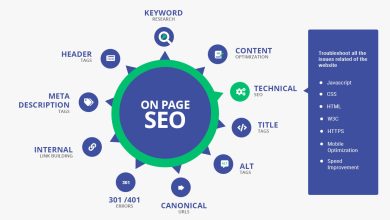
Disadvantages Of Deep Cleaning Teeth
disadvantages of deep cleaning your teeth: Deep cleaning your teeth is an oral hygiene treatment that helps keep gums and teeth healthy.Stones that are above and below the gum line form from plaque that forms in places on the teeth that are inaccessible to brushing with a toothbrush. The presence of bacteria that actively multiply in such deposits poses a threat. Various inflammations, increased tooth sensitivity, caries, periodontitis, and even tooth loss can result from the infiltration of tartar into the gum tissue. Patients seek assistance from dentists because such plaque cannot be removed through independent home hygiene. Professional teeth cleaning, or complete oral hygiene aids in resolving the issue.

What is a deep cleaning of teeth?
By removing plaque and tartar from your teeth through deep brushing, you can reduce inflammation in your gums and improve your gum health.
The sticky film that forms on the teeth is called plaque. It is made when saliva and food particles mix together, and it has bacteria in it. By brushing your teeth on a daily basis, you can get rid of the plaque that builds up on your teeth.
However, brushing only removes some of the plaque that is between teeth. A Tartar is formed when the remaining plaque calcifies or hardens.
Gum disease can result from tartar or plaque buildup. Gingivitis and gum inflammation are examples of this. Gingivitis can progress to periodontitis if it is not treated. This is a serious infection that eats away at the tooth-supporting bone.
Cons of deep cleaning
- The risk of gum recession
- in very rare instances
- slight pain
- tenderness.
What are the benefits of deep cleaning teeth?
You may need a deep cleaning if gum disease has caused your gums to pull away from your teeth, creating a space greater than 5 millimeters (mm) deep.
When gum disease worsens, the distance between the gums and teeth may increase. This can weaken the bones that support your teeth, leading to tooth loosening or loss.
If your dentist recommends a deep cleaning, the benefits of this procedure include:
- preventing gum disease from getting worse.
- promote healing and treat the current infection.
- scrubbing your teeth both above and below the gum line.
- eradication of gum disease-related bad breath.
- protection for the teeth’s roots.
What are the disadvantages of deep cleaning teeth?
While deep cleaning can assist in the treatment of gum disease, it carries its own risks. The following are the disadvantages of deep cleaning teeth:
- Can damage the nerves;
- Does not guarantee that the gums will reattach to the teeth;
- Can cause gums to recede, and infection is possible if your
- The immune system is weak.
- sensitivity and pain
how long does a deep cleaning take at the dentist?
Regular brushing is not the same as deep brushing. Plaque and tartar above the gum line can be removed with regular brushing. Deep cleaning, on the other hand, gets rid of plaque and tartar below the gum line.
Plaque and tartar can get into the space between the teeth and gums in gum disease. These growths are removed by cleaning below the gum line.
Deep cleaning includes tartar removal and root alignment
Scaling and root planning are usually part of a deep cleaning that takes place over two or more visits.It can take anywhere from one to two hours for each visit.
The dentist removes plaque and tartar from below the gum line during a tartar removal appointment. Your dentist will clean your teeth’s roots of plaque and tar during a root cleaning appointment. Helping the gums reattach to the teeth, helps close the gap between the teeth and the gums.
You may need to take antibiotics
Antibiotics may be required if your immune system is compromised; you may need to take them for several days. This is due to the possibility of infection following the procedure. Additionally, deep tooth brushing can occasionally introduce bacteria into the bloodstream.
Is deep cleaning painful?
Because removing tartar and flattening the root can be uncomfortable, the gums will be numbed with a topical or local anesthetic. Some sensitivity is to be expected following treatment. You may experience mild bleeding and swelling of your gums.
How to reduce deep teeth cleaning before and after
The severity of gum disease or inflammation influences the cost of deep cleaning.
Most of the time, you’ll only need two visits to remove tartar and plaque, but some people need up to four. The quadrants of your mouth are examined during these cleansings. Depending on where you live and how much treatment you need, you could pay $100 or more for each quadrant.
Deep cleanings are covered by most dental insurance plans.
benefits of deep cleaning teeth
Deep brushing your teeth improves gum disease healing and eliminates bad breath. Because deep cleaning comes with risks, it’s important to know about any potential problems or side effects.
You can anticipate some sensitivity and swelling following this common and safe procedure. Contact your dentist if the swelling, bleeding, or pain persists for more than a week after the procedure.
What to expect after deep teeth cleaning
There are several stages to it:
- The doctor uses the Air Flow device to remove age spots from tea, coffee, and cigarettes as well as soft plaque from the teeth. The enamel is cleansed by being subjected to a powerful jet of water, air, and a special paste.
- Hard plaque and tartar are removed by the doctor using an ultrasound machine. Both supragingival and subgingival deposits can be removed with the help of specialized, thin tips.
- The doctor polishes the enamel so that the new plaque won’t stick to the teeth. After it, the teeth’s surface becomes less susceptible to plaque and dirt.
- The doctor finishes the procedure by applying fluoridation, a special composition that strengthens the enamel and protects the teeth. This substance stays on the teeth for one to seven days.
Benefit
- After a professional cleaning, enamel becomes smoother and better absorbs food and toothpaste special substances and trace elements.
- The elimination of the pathogenic environment, which is responsible for a variety of inflammatory processes in the oral cavity, occurs when plaque and tartar deposits are removed. For gum and tooth disease prevention, professional cleaning is essential.
- In particular, it can be almost the only treatment that doesn’t require any other procedures for gingivitis and some forms of periodontitis. eliminates foul breath.
The aesthetics of a smile are enhanced when tartar and plaque are removed: - After being cleaned,
- teeth appear brighter visually because their original color is restored.
The benefits of deep cleaning include
- fighting bad breath,
- preventing gum disease,
- protecting the teeth’s roots,
- and preventing tooth loss.
Harm
- If the patient has significant calculus growth, subgingival calculus removal can be painful. However, in the circumstances of contemporary medicine, anesthesia is utilized to resolve this issue. The procedure is performed without anesthesia in 98% of cases, and only 2% of patients who are hypersensitive to pain are given anesthesia.
- Gum damage occurs during the tartar removal procedure. This is a natural injury that usually results in bleeding and sometimes hurts. Within a few hours, these symptoms go away, and the gum tissue is restored completely.
- Fillings can be lost during ultrasound-based professional teeth cleaning. Nevertheless, the restoration’s loss indicates poor adhesion to the tooth. Hidden pathological processes can be avoided if a flaw in the fit of the filling to the tooth is discovered promptly. Ultrasound cannot remove a filling that adheres well to the tooth.
- There are a few things that shouldn’t be done during an ultrasound professional teeth cleaning. The use of a pacemaker, the presence of implants or orthopedic structures in the mouth, as well as bronchitis and asthma, serious infectious diseases (hepatitis and tuberculosis), and childhood and adolescence are all examples of these conditions. Air Flow abrasive cleaning should be used whenever ultrasound cannot be utilized.



